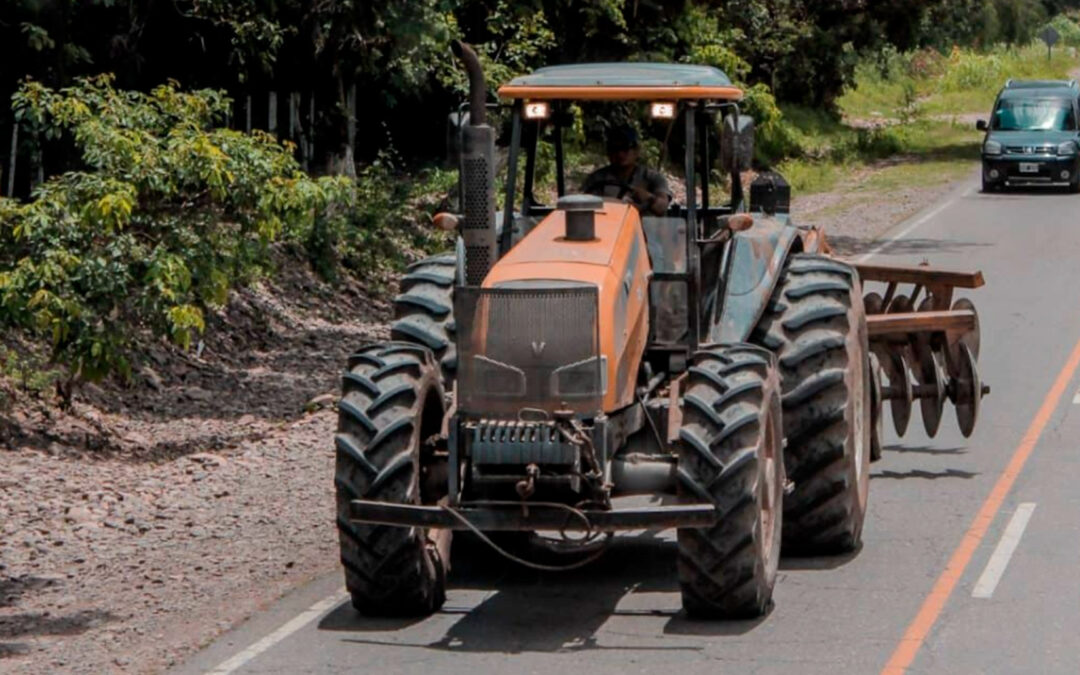[vc_row][vc_column][vc_column_text]
Every day, you hear about car crashes between a truck and car, a vehicle and a solid object like a phone pole or tree, or between pedestrians and vehicles. There’s another form of motor vehicle accident that isn’t heard of as often, but these accidents do occur and can become complicated. When your vehicle crashes into a piece of farm equipment or a tractor, it’s especially frustrating. What do you do?
Tractors and Farm Equipment Can Use Public Roadways
Legally, a tractor or other piece of farm equipment is allowed to be on public roadways. The driver of the tractor or other equipment was likely well within his/her right to be on the road. States often have their own rules, however, so look into the local and state laws. The laws are there for a reason.
Statistics on the number of crashes vary greatly from one state to the next. In the Midwest, around 7,000 vehicle and farm equipment crashes occurred during a five-year period. While 7 out of 10 crashes were in rural areas, the remaining crashes happened in urban areas. It’s not a problem specific to small towns and rural areas. Tractor and farm equipment drivers need to take preventative measures to make sure they’re visible, but drivers also need to be cautious when approaching them and only pass if there is room and there’s no oncoming traffic.
These slower vehicles pose significant hazards. Those on a tractor or motorized farm equipment are not likely to have the modern safety equipment a car has. Seatbelts may not get used. If the tractor rolls, crushing injuries are very likely. Meanwhile, farm equipment is often wider than a single lane. If a car comes around a corner at normal speeds and finds a slow-moving tractor, there’s the risk for a head-on collision. If it’s before sunrise or after sunset, an unlit piece of farm equipment may not be visible until the vehicle is right on top of it. Visibility is a driving force behind state laws that apply to farm equipment that uses public roadways.
For example, the Iowa Department of Transportation has a rule in place that tractors and other pieces of farm equipment must have a “Slow Moving Vehicle” emblem measuring no less than 13.8 inches and made from a fluorescent red-orange material that’s surrounded by a reflective red border. That emblem has to be between 2 and 10 feet from the ground and prominently displayed on the rear. Emblems must be cleaned and inspected regularly and replaced if they fade. If you’re in an accident with a tractor that lacked that emblem, note it. Take photos to show that they lacked that visibility measure.
Treat it Like Any Accident
Treat this like any accident. Call the police to start the accident investigation. If you’re okay, you can check on the other driver. Take photos of the tractor/farm equipment, accident scene, and your care if you’re able. Get witness names. See if the farm equipment’s operator has insurance. At the very least, get the name and contact information for the farm and the operator’s license information. Let the paramedics check you for injuries. If it’s recommended you go to the hospital, do so. It’s better to take the time to be seen than risking your health to injuries you don’t feel at that moment.
At home, you can call your insurance agent to get a claim started. If the farm does have insurance, the investigation into who was at fault will begin. They’ll need to know witness names and contact information, the farm’s contact information, and the driver’s information.
Injuries sustained during a collision with farm equipment may be serious as those operating the farm equipment may not have the same safety features that cars do. Tractors are often open and lack things like airbags and steel frames. Not every state requires farm vehicles to be registered, so there may not be an insurance policy in place. If you crash into a tractor that’s not illuminated or visible when it’s dark out, even if it’s not your fault, your insurance may need to cover the damages using uninsured motorist coverage if the other operator lacks insurance.
After a collision with farm equipment, you do need to focus on your health first. Once that’s done, consider calling a legal expert who understands the laws regarding crashes with farm equipment. It helps if you have a knowledgeable car crash attorney to answer your questions and help you understand your rights and obligations.
What If It’s the Other Way Around?
If you were operating the farm equipment and a car passed unsafely and crashed into you, follow the same steps. Focus on your own injuries first. If you’re hurt, stay still and let the paramedics help you. Make sure a witness calls the police to start the accident report. Follow up with the police to get a copy of the accident report. Call your insurance company to start the claim against the other driver.
Trial Lawyers for Justice are here to help you navigate the process. We’ve helped dozens of clients win substantial awards or settlements following accidents involving cars, commercial vehicles, or farm equipment. It’s easy to arrange a free consultation online or by phone by calling 1-866-TL4J-LAW.
[/vc_column_text][vc_empty_space height=”11px”][/vc_column][/vc_row]

